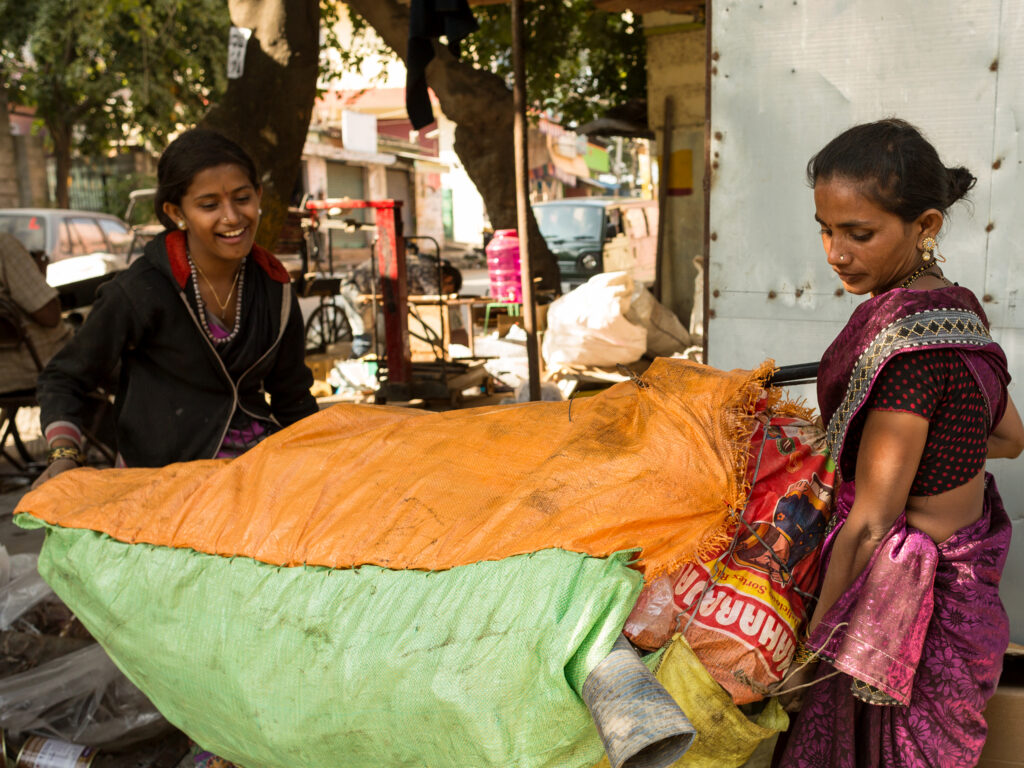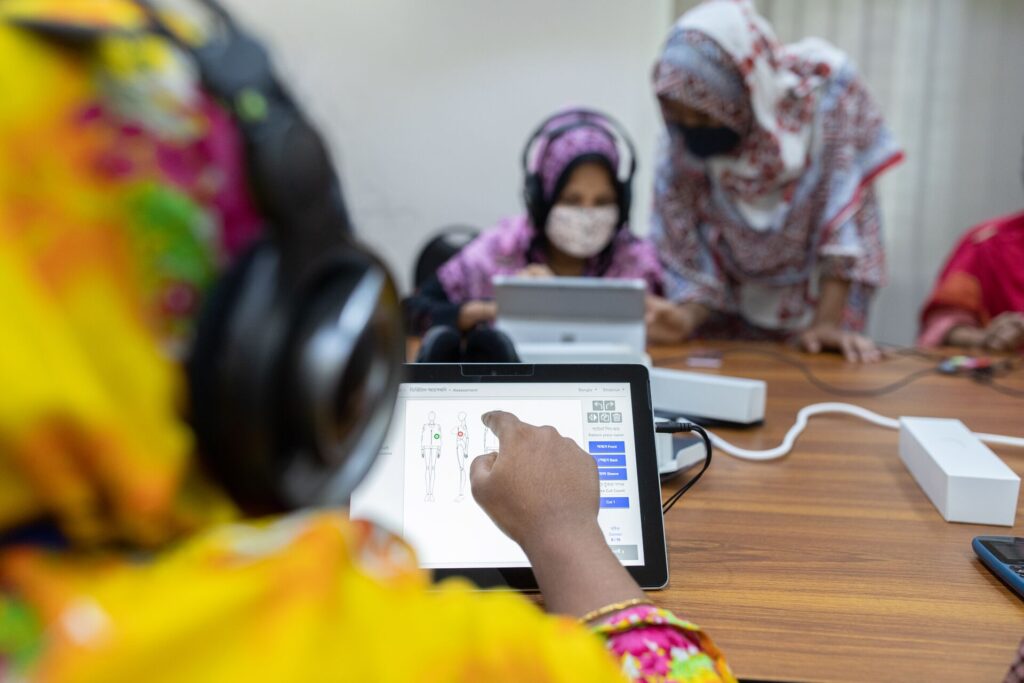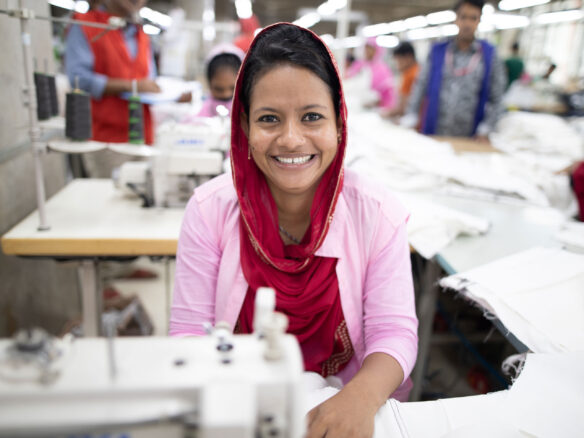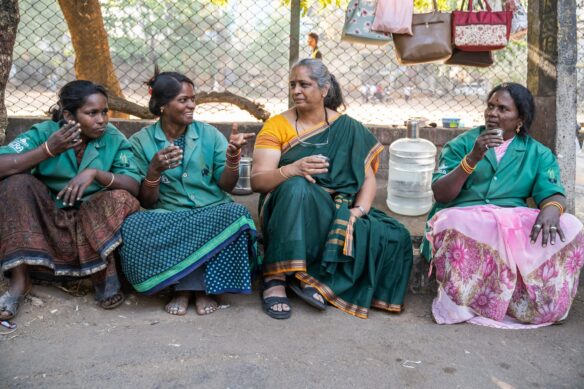To create Inclusive Societies for all and ensure equity for the long-term, failing established systems need to radically change and power relations need to be shifted. But no one can do this on their own, and too many organizations are working in isolation from one another. Breaking these silos is key to achieving the UN Sustainable Development Goals by 2030. The 17 quite different goals are so interconnected, and systems change is too complex for any actor to tackle alone – it requires broad cross-sector collaborations. Yet, this is easier said than done because it requires a complete reimagining of how different actors collaborate. We must learn to shift our thinking from silos to eco-systems.
Sprung from our entrepreneurial heritage, it is in H&M Foundation’s core to use unexpected collaborations to disrupt traditional systems. Central to our new strategy is to facilitate cross-sectoral partnerships to build holistic programs that look at the broader needs of the primary actors, the target group in question. We wanted to bring in a multitude of partners that are all experts within their field, that are locally anchored and represent the beneficiaries to ensure local ownership. A true bottom-up approach. We also wanted to broaden our eco-system to involve more than just the social purpose sector and therefore invite social entrepreneurs and the private sector as well. And so, we started drawing up a blueprint on how to accelerate the development for Inclusive Societies and found the Collective Impact Approach. We decided to give it a go in areas where it had never been used before.
“At H&M Foundation, we strongly believe the inclusion of diverse perspectives is key to achieving fundamental changes. Effective and sustainable systems change can only happen when the people impacted by the change are included and inequities are addressed openly and proactively. We believe in the power of working collectively to achieve real impact at a scale beyond what any one actor could achieve alone. And we use our influence to distribute power and resources to others.”
Charlotte Brunnström, Strategy Lead at H&M Foundation.
The Collective Impact Approach – a highly structured eco-system
The Collective Impact approach is a method that we believe can create the collaborative framework needed to reach holistic solutions to complex problems in order to achieve our goal – a world that is inclusive and fair for all. The method can be defined as a highly structured network of community members, organizations, and institutions that advance equity by learning together, aligning, and integrating their actions to achieve population and systems-level change. All actors partnering up in a Collective Impact project must agree to:
- Define a common agenda – collectively define the problem and create a shared vision to solve it.
- Establish shared measurement – track progress in the same way allowing for continuous improvement.
- Foster mutually reinforcing activities – coordinating collective efforts to maximize the end result.
- Encourage continuous communication – to ensure everyone in the network stays informed.
- Have a strong backbone – a team dedicated to orchestrating the work of the group.
Since 2020, the Collective Impact approach – with priority placed on equity – is being piloted in two programs in India and Bangladesh. With this method the H&M Foundation will use an eco-system thinking and design process to reshape how development work is done. This is a much-needed step towards moving away from being a traditional donor funding projects that many times operate in silos, to being a facilitator – a catalyst that disrupts the global development sector and creates a platform for true collaboration and co-creation to take place between local expert organizations. This role is new for the H&M Foundation, shifting agency to local expert organizations, empowering them to create local solutions while still being an engaged partner.
Saamuhika Shakti – our first-of-its-kind initiative in Bengaluru

Saamuhika Shakti is a first-of-its-kind initiative by H&M Foundation to improve the quality of life for waste pickers in Bengaluru, India. Waste picking ranks lowest in the hierarchy of urban informal occupations in the country but are at the same time critical to its waste management system. Globally, initiatives that aim to improve recovery rates of for example plastics to reduce the burden on the environment often overlook the socioeconomic impacts on the informal labor force, which can further marginalize waste pickers. The program aims to plug this gap.
“The vision is for waste picker families to have greater agency to lead secure and dignified lives. By facilitating collaboration across stakeholders and sectors we address basic needs that were identified and prioritized by the waste picking community such as education, health, safety, and access to fundamental rights, as well as increasing economic opportunities. The initiative also has a strong focus on equity, ensuring the inclusion of marginalized groups such as women and girls.”
Maria Bystedt, Strategy Lead at H&M Foundation.
Backing female garment workers in Bangladesh

The use of automation and digital technology is making its way into the textile industry, also creating a risk of unemployment for millions of Bangladeshis. Women are particularly at risk, as they represent the majority of the total workforce within the garment industry and are often employed to execute the tasks which are highly susceptible to automation. Hence, H&M Foundation is taking a long-term approach to support women garment workers in this transition.
“We take on a holistic approach involving important players from different sectors to achieve systemic, long-lasting change. Our long-term goal is to prepare and equip the female garment workers to work successfully alongside AI and automation, and by this safeguard their livelihoods. The new technology can significantly improve female participation in economic life and enhance the social autonomy of women.”
Fernanda Drumond, Strategy Lead at H&M Foundation.
Learning as we go
Another important aspect of our new strategy is transparency – to share our learnings, and mistakes. There will always be challenges and failures, but we don’t fear imperfection, that’s how we learn, and that shapes our way forward. We prototype together with our partners, try, fail, learn, and try again until we find that innovation or approach with the potential to change the game.
Both our initiatives in India and Bangladesh will be externally evaluated. This will help us understand whether the model was suitable, and whether the holistic approach of ensuring the community is reached by multiple interventions rather than singular such, generates more sustainable outcomes and impact. All in all, the evaluation will provide important insights on effectiveness of the project and the Collective Impact method, factors that facilitated or inhibited impact as well as advise on adjustments needed and give guidelines towards replicability in other contexts. We will share any findings transparently to peers, academia, policy makers, and the general public.
As a donor, we can move the needle and enable holistic systems change – if we ask for it. We must dare to invest in complex projects and take on a more long-term perspective, be unconventional and innovative. As with any transformation you have to start with yourself, and with this new strategy the H&M Foundation have begun that journey!



